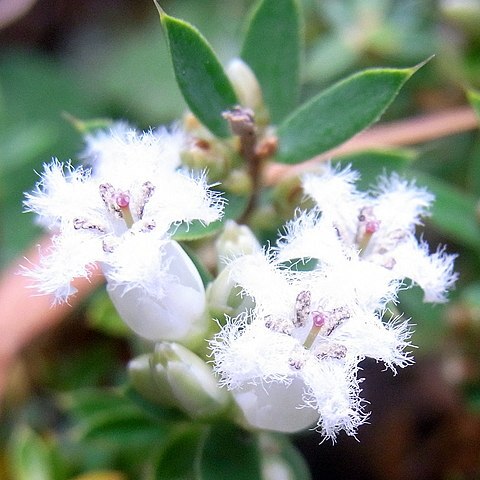A very small shrub. It forms mats. It grows 5-15 cm high and spreads 50-150 cm wide. Young growth can be hairy. The branches are long and wiry and often form roots when near the ground. The small branches are rough. The leaves are 0.3-0.6 cm long by 0.2 cm wide. The are oblong and crowded. They are stiff and curved inwards and have a sharp tip. The flowers are like tubes and 0.4 cm long. They are white with spreading lobes. The fruit are about 0.8 cm across. They are almost round and bright red.

